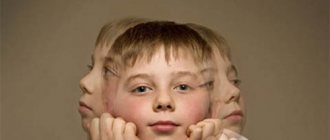Epilepsy (ICD10-G40.0) is a fairly common psychoneurological disease with a chronic latent course. This disease is characterized by sudden epileptic seizures, in which patients experience impaired sensory, motor, mental and autonomic functions.
For a long time, epilepsy was considered an incurable disease. However, thanks to the development of modern medicine, today this opinion is considered erroneous. The use of antiepileptic drugs allows one to overcome the disease in more than 50% of cases. In other patients, there is a significant decrease in its clinical manifestations.
High-quality diagnosis and effective treatment of epilepsy is offered by the neurology clinic of the Yusupov Hospital in Moscow. The clinic has all the necessary medical equipment and uses the latest techniques to guarantee an accurate diagnosis and high results of antiepileptic therapy.
The main methods of combating epilepsy are: long-term, regular and constant drug therapy, as well as maintaining a healthy lifestyle.
F00-F09 ORGANIC, INCLUDING SYMPTOMATIC, MENTAL DISORDERS
This block includes a number of mental disorders grouped together due to the presence of clear etiological factors, namely the cause of these disorders is brain disease, brain injury or stroke leading to cerebral dysfunction. Dysfunction can be primary (as in diseases, brain injuries and strokes that directly or selectively affect the brain) and secondary (as in systemic diseases or disorders when the brain is involved in the pathological process along with other organs and systems)
Dementia (F00-F03) is a syndrome caused by brain damage (usually chronic or progressive) in which many higher cortical functions are impaired, including memory, thinking, orientation, comprehension, numeracy, learning, speech and judgment . Consciousness is not darkened. Decline in cognitive function is usually accompanied, and sometimes preceded, by deterioration in emotional control, social behavior, or motivation. This syndrome is observed in Alzheimer's disease, cerebrovascular diseases and other conditions that primarily or secondarily affect the brain.
If necessary, an additional code is used to identify the original disease.
More details
Biological and social causes of speech delay in children
The causes of delayed speech development are most often individual, and the process itself depends on a number of external and internal factors. The most obvious reasons that provoke a violation of the development of communication skills can be outlined as follows:
- Infectious diseases suffered by the mother during pregnancy. Poisoning can also be a risk factor.
- Genetic predisposition (some features of the development of the speech apparatus that cause such disorders are transmitted hereditarily).
- Prolonged fetal hypoxia; the birth of a child prematurely, or rapid labor in the mother.
- Poorly developed muscles responsible for pronunciation and formation of sounds (in particular, speech motor muscles, mouth muscles). In some cases, the root cause may be weaning the baby too early.
- Intrauterine or birth injuries.
- Hearing impairment not diagnosed at an early age. Lack of proper correction and treatment.
- Brain injuries of varying severity received by a child in the first year of life.
- Mental illness and other neurodevelopmental disorders.
- Children's lack of communication with their parents, lack of attention on their part. Quite often this leads to underdevelopment of auditory attention and speech hearing.
- Neurology and psychosomatics.
- Unfavorable psychological climate in the family.
Important! Insufficient development of speech in a child can be judged if the vocabulary and sound features do not correspond to conventionally accepted age norms that are relevant for each period of life.
The main stages and conditional norms of speech development in young children
Emotional sensitivity and the ability to regularly communicate with those closest to them lead to the fact that by the fifth or sixth month the child moves from the babbling stage to a new stage - babbling. He gradually learns to pronounce more and more sounds and after a couple of months begins to collect them into syllables. Over time, elementary syllables are connected into chains, and the child learns to pronounce them with different intonations.
This is not speech at all, so the child at this stage does not yet need an interlocutor. He can walk on his own when no one is around. However, it is during this period that it is most important for parents to talk to their child. This will give him the opportunity to use the speech of a loved one as a model and repeat after him.
Important! It is important to teach a child speech during specially organized classes and throughout the day, for example, when changing clothes or feeding, verbally accompanying certain actions. For the successful formation and development of speech, a child must hear the voices of his family all the time - this will provide him with invaluable assistance in mastering speech.
Already by nine months, the stage of verbal babbling begins. The child does not immediately begin to pronounce entire words; at first he will try to simply assemble the syllables into a single whole. And only over time do words begin to become attached to specific people or situations. During this period, parents should carefully monitor how the child’s vocabulary is expanding and how often he learns to pronounce new words.
Complex wording and expressions are best avoided. The baby won’t remember them anyway, and his attention will be overloaded. Concepts denoting the very name of the object, its properties and qualities, for example, colors, shapes, sizes, etc., need to be gradually introduced into his active vocabulary.
It is necessary that the child not only hear speech, but also have the opportunity to observe facial expressions, movements of the lips and face in general. It is advisable to address the child by name as often as possible and play with intonation. Children's songs, rhymes, and nursery rhymes also have a good effect.
Important! An alarming sign for parents should be a “fading” of vocabulary - if it is not replenished before the onset of the second year.
After the child has learned to pronounce individual words, he can be gradually introduced to the pronunciation of short phrases and phrases. They should be simple, understandable and at the same time succinct, contain a description of simple objects, a call to action, etc.
By the age of one and a half years, the baby’s vocabulary already includes 50 words or more. At this time, speech development becomes more intense. The child actively listens and repeats everything he hears around him. And in the third year he already begins to understand grammatical structures and the structure of speech.
At this time, it is extremely important to encourage the child to talk, talk about various events from his life (even in the simplest forms), his experiences, and verbally express requests. Preschool and primary school age is marked by the beginning of the formation of coherent speech.
Diagnosis of speech disorders
If the child’s speech development does not meet age standards, it is advisable for parents to seek help from a professional speech pathologist. He will be able to conduct an examination and explain to parents what the psychology of children with speech disorders is. The examination carried out by a specialist should include the following:
- Assessment of active vocabulary.
- Assessment of the quality of coherent speech.
- Sound quality.
- Quality of fine and articulatory motor skills.
F30-F39 MOOD DISORDERS (AFFECTIVE DISORDERS)
This block includes disorders in which the main disorder is a change in emotions and mood towards depression (with or without anxiety) or towards elation. Changes in mood are usually accompanied by changes in overall activity level. Most other symptoms are secondary or easily explained by changes in mood and activity. Such disorders most often tend to recur, and the onset of an individual episode can often be associated with stressful events and situations.
More details
F60-F69 PERSONALITY AND BEHAVIORAL DISORDERS IN ADULTAGE
This block includes various states and behavioral patterns of clinical significance that tend to be stable and arise as an expression of the individual’s characteristic lifestyle and his relationships with others. Some of these conditions and behavior patterns emerge early in the course of individual development as a result of the simultaneous influence of constitutional factors and social experiences, while others are acquired later in life. Specific personality disorders (F60.-), mixed and other personality disorders (F61.-), and long-term personality changes (F62.-) are deeply ingrained and long-lasting patterns of behavior that manifest themselves as inflexible responses to a wide variety of personal and social situations. Such disorders represent extreme or significant deviations from the way in which the average person at a given level of culture perceives, thinks, feels, and especially communicates with others. These behaviors tend to be persistent and span many areas of behavior and psychological functioning. These disorders are often, but not always, associated with subjective experiences of varying degrees and problems of a social nature.
More details
Codification of speech disorders according to ICD 10
There are several types of speech disorders. Below they are discussed in more detail.
Clinical symptoms of FGR
The very term GSD (general speech underdevelopment) was once introduced by R. E. Levina. The sooner parents notice signals in a child indicating that the development of his speech does not correspond to age norms, the higher the likelihood that treatment will make it possible to eliminate or reduce minimize the consequences of the violation.
When there is a delay in psycho-speech development (ICD code 10), the following symptoms are identified in children:
- Lack of reaction to the speech of loved ones, observed before the age of 9 months.
- Lack of reaction to changes in the speaker's intonation.
- Lack of attempts to begin basic speech activity (these include characteristic babbling, humming, etc.).
- The desire to build communication with adults using elementary emotional manifestations.
- Lack of onomatopoeia.
- Lack of response to your name.
- Swallowing and chewing disorders.
On a note! Based on the above symptoms, we can draw a conclusion about what the clinical, psychological and pedagogical characteristics of children with speech disorders look like.
Between the ages of one and two years, a child with developmental disabilities does not show or name the objects shown in the picture. He is unable to answer simple questions and does not respond to requests made even by close people. From two to three years old, it is difficult for him to complete tasks that require him to name objects; he cannot perform two or more actions in a row one after another. He also cannot form common sentences, and in more complex cases, even simple phrases.
Speech problems in a child 5 years and older are indicated by the fact that he cannot speak in sentences, using only phrases. He pronounces most of the sounds incorrectly, which often makes it difficult to understand what was said. There is most often no reaction to adults’ calls to themselves; The answers to the questions are extremely simple, monosyllabic.
Specific developmental disorders of speech and language
In general, specific disorders of speech and language development, in particular SPD, are designated in the ICD under the code F80. These include disorders that appear already in the early stages of speech development. And although formally, they are not correlated with sensory deficits, disorders of neurological or speech mechanisms, mental retardation or environmental factors, they are often associated with related problems: deficiencies in reading or writing, pronunciation and spelling of words. Interpersonal relationships, the emotional-volitional and personal spheres also suffer.
Additional facts about ZRR
The first attempts at onomatopoeia in a child begin at the age of approximately 1.5-2 months. He almost doesn’t cry anymore and moves on to the humming stage, when the child does not yet utter sounds as such, but tries to attract the attention of adults with their help.
Important! At first, the baby begins to walk only if he feels comfort, both physical and psychological. He needs parental attention, care, to be fed and dry.
F70-F79 MENTAL RETARDATION
A state of delayed or incomplete mental development that is characterized primarily by declines in developmental skills and skills that define overall intelligence (i.e., cognition, language, motor skills, social functioning). Mental retardation can occur with or without another mental or physical disorder.
The degree of mental retardation is usually assessed by standardized tests that determine the patient's condition. They can be supplemented with scales that assess social adaptation in a given environment. These techniques provide an approximate determination of the degree of mental retardation. The diagnosis will also depend on an overall assessment of intellectual functioning at the identified skill level.
Intellectual abilities and social adaptation may change over time, but rather weakly. This improvement may result from training and rehabilitation. The diagnosis should be based on the level of mental activity currently achieved.
An additional code is used when it is necessary to identify conditions associated with mental retardation, such as autism, other developmental disorders, epilepsy, conduct disorder, or severe physical disability.
To identify the degree of mental impairment, categories F70-F79 are used with the following fourth character:
.0 Indicating no or mild conduct disorder .1 Significant conduct disorder requiring care and treatment .8 Other conduct disorder .9 No indication of conduct disorder
More details
Signs of the disease
Symptomatic epilepsy may manifest differently in patients with different forms of the disease.
During generalized attacks, patients usually lose consciousness, completely lose control over their actions, and may fall. They develop a pronounced convulsive syndrome.
Symptoms of localized epilepsy can be varied and depend on the location of the lesion. They can be mental, sensory, vegetative or motor.
Symptomatic epilepsy can be mild or severe in severity.
Mild attacks are usually not accompanied by loss of consciousness, but patients experience false, unusual sensations, and they may lose control over parts of the body.
With severe symptomatic epilepsy, a person may lose touch with reality, certain muscle groups contract convulsively, and control over their own movements is lost.
Frontal symptomatic epilepsy is manifested by the sudden onset of an attack, its short duration (from 40 to 60 seconds) and high frequency, motor phenomena.
In patients with symptomatic temporal lobe epilepsy, confusion, auditory and visual hallucinations, facial and hand automatisms occur.
With parietal symptomatic epilepsy, patients develop muscle spasms, pain, attacks of sexual desire, and temperature perception is impaired.
Symptomatic occipital epilepsy is characterized by the appearance of visual hallucinations, uncontrolled blinking, visual field disturbances, and head twitching.
F80-F89 PSYCHOLOGICAL DEVELOPMENTAL DISORDERS
The disorders included in this block have common features: a) onset is required in infancy or childhood; b) disruption or delay in the development of functions closely related to the biological maturation of the central nervous system; c) stable course without remissions and relapses. In most cases, speech, visuospatial skills and motor coordination are affected. Typically, a delay or impairment that appears as early as it can be reliably detected will progressively decrease as the child grows older, although milder deficits often persist into adulthood.
More details










